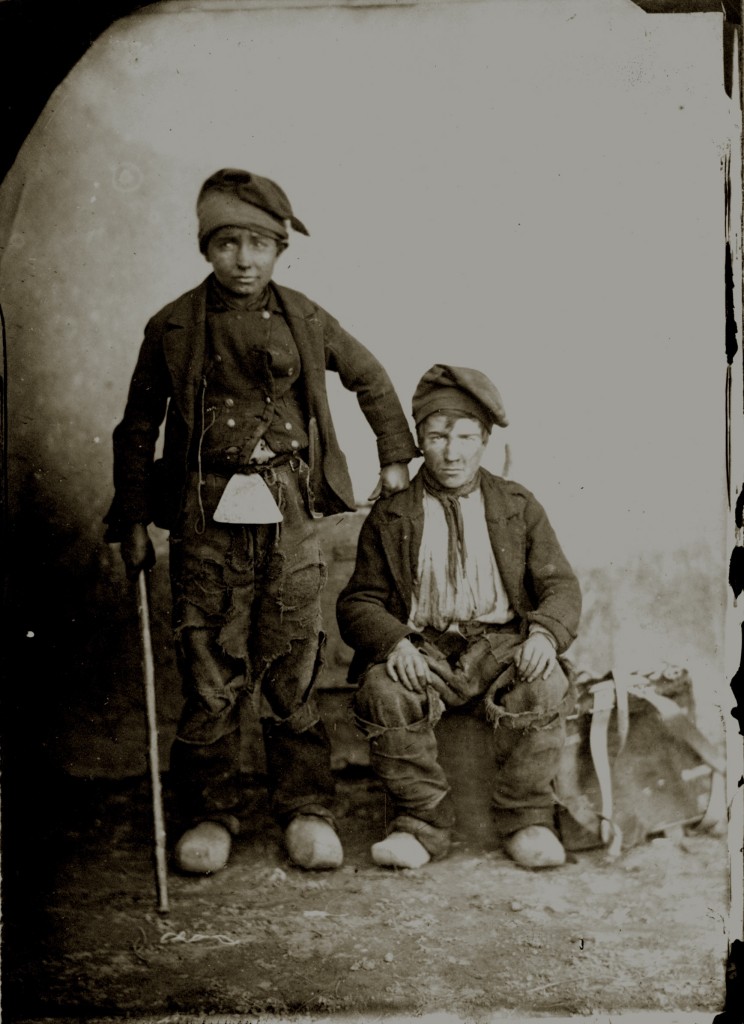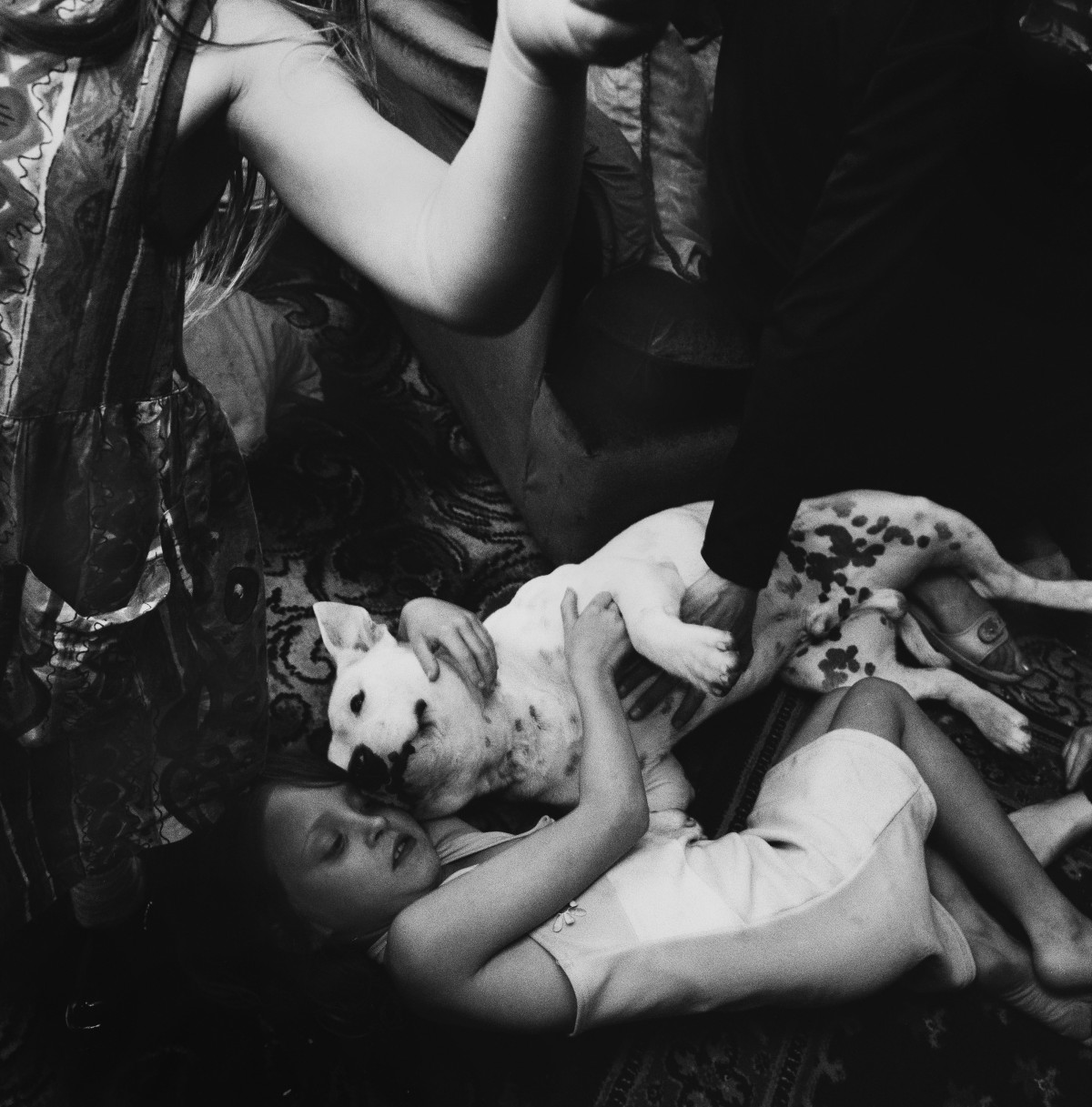Academic, gallerist and private collector, Dr. James Hyman discusses what makes a good photograph.
Let’s take two photographs, taken one hundred years apart. A tiny albumen print of two young men taken by one of the greatest photographic pioneers of the nineteenth century, Charles Negre, and a vintage exhibition print of two boys by Bert Hardy, one of the best loved photojournalists of the twentieth century. The first photograph, taken in the early 1850s, is almost certainly unique and has barely been exhibited or published; the latter was published in Picture Post magazine in 1948, at a time when the magazine had a circulation of over a million. But despite their different audiences, both images share a striking intimacy and reveal a profound empathy between photographer and subject.
These two pictures embody many of the qualities that I most prize in a photograph: presence, engagement, intimacy and discovery. In each case I knew the photograph in reproduction way before seeing the actual work and in each case the actual photograph turned out to be an unexpected object: the tiny size and deep bronze colour of the Negre adds to its tenderness, and the beautiful print of the Hardy elevates it from the world of news print.
For years I struggled to understand the Negre photograph. Entitled Deux Savoyards, it was apparently taken in Paris and depicts two itinerant beggars. But why choose such an unusual subject? Photography was in its infancy. The dominant motifs, given the long exposure times, were buildings, especially grand public buildings such as churches and monuments: the fixed. People were rare and were often the aristocratic families and friends of the photographers themselves. So why depict the very aspect that was so disturbing, the poverty of the modern city? And what exactly is shown? Why the awkward pose? Why the stick?
For years I failed to see what was before my eyes, that this photograph is the earliest in the history of photography to make blindness its subject. True, the famous Scottish partnership of Hill and Adamson had, in the 1840s, depicted a blind musician with his harp, but his blindness was incidental to the picture of a musician with his instrument. Once I realised that blindness was the subject of Negre’s picture, the pose and props become clear: the stick, the distracted gaze of the boy, the blind boy orientating himself by putting a steadying hand on his companion’s shoulder. This picture, as with so many good photographs, is as much about touch as it is about seeing.
A century later on the streets of the Gorbals, a slum in Glasgow, all is animation as two boys rush towards us. Like Negre before him, Hardy presents poverty, but here all is animation, vigour, exuberance. Again touch is a key. The boys hold hands – an intense demonstration of the bond between them, a sign of strength not dependence – and rush at us as one. They are filthy but life in these streets is fun. Hardy, who had come from similar streets, would later describe the work as his favourite, identifying with the boys.

I am touched by the content of these photographs, but holding them in my hands, deepens this experience. Such is the proliferation of reproductions in books or magazines or online that this appreciation of the object is becoming lost. When I look at a reproduction of a painting, I appreciate that it is not the real thing, and for me the experience of a photograph, also needs to be direct, one to one, in the flesh, in my hands: as with a painting, a reproduction of a photograph, especially a vintage photograph, is not a substitute for the real thing.
The photographer’s connection with his or her subject – where they stand literally and metaphorically in relation to the subject – is also crucial. Is the vision cruel or tender? It is obviously possible to be a great image maker without having a connection with the subject, but it is often closeness that makes for profundity.
A good photograph engages emotionally and intellectually. It challenges the viewer to see the world in a different way and to discover new things. Its relationship with the viewer is not fixed but unfolds over time. Each time I return to a good photograph I respond to it in a new way. I realise that I know it less and less. Photography may be prosaic, but a good photograph is slippery. It changes.
One photograph will loudly tell you everything right away, all surface and no depth – “full of sound and fury, Signifying nothing” – whilst another quieter image may continually work away at you. There are pictures by Raymond Moore of such obliqueness that they gnaw away at me. Undemonstrative, subtle, illusive, these works endlessly fascinate and engage.
So let’s end with a third picture, something more recent: a large square, velvety-black photograph by Ken Grant that is reproduced in his book, No Pain Whatsoever. Here again is a photograph about closeness and touch. A girl lies on the ground embracing a dog that seems to be the same size as her. But soon our gaze moves from the general to the particular. To the centre, slightly displaced, is a jumble of hands: there are the hands of the girl that embrace the dog, the paw of the dog and, coming from out of the darkness, the steadying hand of an adult – protective without being intrusive – that prevents the dog from rolling onto the girl. Everything looks and feels as though it is within grasp. Ken is there. We are there. We are part of this. We are participants and not just observers.

So for me a good photograph is about the object as well as the image. It’s about the subject and the content. But above all a good photograph is about relationships: the relationships between the photographer, the subject and the viewer. A good photograph is about trust. It’s about reaching out and connecting.
For more information about James Hyman’s educational resource, please visit www.britishphotography.org



